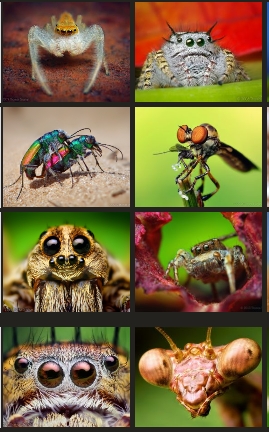BREAKING NEWS
LATEST POSTS
-
Neural Radiance Fields (NeRFs) at Mapillary
Today, Mapillary is launching NeRFs, a new feature that will allow you to explore landmarks and popular sites in detailed 3D views – all reconstructed from 2D images uploaded to Mapillary.
https://blog.mapillary.com/update/2024/03/11/Mapillary-NeRF.html
https://www.mapillary.com/app/?lat=17.751177534360437&lng=0&z=1.5
-
India’s PhantomFX To Acquire Oscar Winner Phil Tippett’s VFX Company Tippett Studio
https://deadline.com/2024/03/tippett-studio-to-be-acquired-by-phantomfx-1235855050/
Under the agreement, Tippett Studio will retain its name and continue to provide high-level VFX and post-production services to the major studios, networks, and independents.
-
Lisa Tagliaferri – 3 Python Machine Learning Projects
A Compilation of 3 Python Machine Learning Projects
- How To Build a Machine Learning Classifier in Python with Scikit-learn
- How To Build a Neural Network to Recognize Handwritten Digits with
TensorFlow - Bias-Variance for Deep Reinforcement Learning: How To Build a Bot for Atari with openAI gym
FEATURED POSTS
-
Cinematographers Blueprint 300dpi poster
The 300dpi digital poster is now available to all PixelSham.com subscribers.
If you have already subscribed and wish a copy, please send me a note through the contact page.
-
HDR and Color
https://www.soundandvision.com/content/nits-and-bits-hdr-and-color
In HD we often refer to the range of available colors as a color gamut. Such a color gamut is typically plotted on a two-dimensional diagram, called a CIE chart, as shown in at the top of this blog. Each color is characterized by its x/y coordinates.
Good enough for government work, perhaps. But for HDR, with its higher luminance levels and wider color, the gamut becomes three-dimensional.
For HDR the color gamut therefore becomes a characteristic we now call the color volume. It isn’t easy to show color volume on a two-dimensional medium like the printed page or a computer screen, but one method is shown below. As the luminance becomes higher, the picture eventually turns to white. As it becomes darker, it fades to black. The traditional color gamut shown on the CIE chart is simply a slice through this color volume at a selected luminance level, such as 50%.
Three different color volumes—we still refer to them as color gamuts though their third dimension is important—are currently the most significant. The first is BT.709 (sometimes referred to as Rec.709), the color gamut used for pre-UHD/HDR formats, including standard HD.
The largest is known as BT.2020; it encompasses (roughly) the range of colors visible to the human eye (though ET might find it insufficient!).
Between these two is the color gamut used in digital cinema, known as DCI-P3.
sRGB

D65







